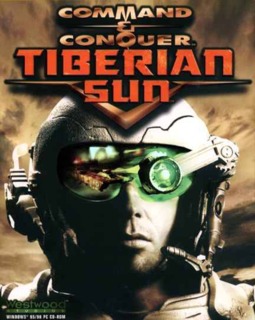Firstly, this reviewer happily states that this expansion is nothing like the lackluster ones which the first game and Red Alert has. This expansion actually has genuinely new and functional content, as well as addresses some issues in Tiberian Sun, that much is for sure. It is also a much better attempt at providing some continuation to the saga that the Tiberian series weaves.
Expansions to existing games have always been about new content, so the new stuff offered by Firestorm will have to be mentioned first. There are the new units that have been provided to each faction; some noteworthy examples include the GDI Juggernaut, the Nod Fist of Nod, a catch-all Nod Reaper cyborg and the Limpet Drones that are very useful in hampering armored rushes.
Some old units have also been re-tweaked. The Nod Artillery is no longer as powerful as it was; for example, it is no longer able to warp terrain as much as it used to. Prices for the building of certain units have also been changed to discourage spamming and greater use of the once-under-utilized ones.
However, this reviewer cannot help but suspect that these new units and changes in old ones have been included to address some balance issues between the two factions that were inherent in Tiberian Sun. For example, the GDI Juggernaut has been described as a counter to Nod Artillery (the fact that it fires a cluster of rounds to bombard a small area certainly suggests it is intended to be used against batteries of the latter), and the Fist of Nod is a clear counterpart to GDI's Mobile War Factory. The changes and additions do not serve much to trip up gameplay to new levels; they simply serve to level the playing field somewhat.
As mentioned earlier, Firestorm is a continuation of the Tiberian saga, set right after Tiberian Sun. It is definitely not piece-meal tripe that expansions for earlier Westwood games were. Gone are the A-rank cast of Tiberian Sun, replaced with mostly computer-generated antagonistic villains and the player character is now a nameless officer that is only spoken to without any request for feedback. The theme of Firestorm does seem to have been over-used - and this feel definitely permeates itself through both sides' campaigns as certain cutscenes are reused for either campaign. However, as befitting one of the traits of the Tiberian saga, which is the enigma that is Kane, the story only serves to answer some questions about the mysterious dude yet pose more of them.
The new maps, especially those in the campaign, are quite bland, if compared to the original ones in Tiberian Sun. Many of them are vast expanses of boring dirt. Perhaps they have been scoured of life completely by CABAL's cyborg forces, but any feeling of satisfaction of having gained ground against them felt hollow (though said ground often offers some strategic advantages against CABAL, such as stretches of flat terrain for forward bases and proximity to patches of Tiberium).
In the sound department, the game has not really improved much over Tiberian Sun; some old, weak-sounding noises remain just as meek. However, the sound effects for the new units are above average. The GDI Juggernaut in particular sounds just as nasty as it looks. The new music tracks are well-suited to the theme of this expansion, but otherwise are just more content to be added to the music loops.
As befitting an expansion, the graphics have not really changed much. However, like the sound effects for the new units, the animations for them are quite impressive. The Juggernaut again has the honour of being singled out as an example: its deployment animations are quite an eyeful to watch. On the other hand, it does cause the difference in the qualities of the graphics invested into the news units and the graphics of the old ones to be all the more apparent here.
The inclusion of new units - and re-tweaking of old ones - help to improve the multiplayer. This reviewer was certainly pleased to see that old, cheap and over-used strategies no longer work. Multiplayer matches certainly felt more worthwhile, with victory or defeat feeling more genuine and deserved. Despite that, there aren't many new strategies to be crafted around the new units, for they, as mentioned earlier, are merely new hardware to fill in the gaps in the offensive/defensive capabilities of either faction.
These changes are nevertheless especially important, as Firestorm's new online persistent game mode would need these improvements in order to foster a sense of balanced gameplay. Unfortunately, this feel of balanced gameplay can only be stretched as far as the proportion of players of one side against the other in this game mode can be allowed. Having more players fighting on one side than the other at any one time can often result in quick and sudden gains on one side, much to the dismay of players of the disadvantaged side when they return later.
Conclusively, it is easy to recommend Firestorm to fans of the C & C series because it is more of the same good stuff and it also fixed many issues from Tiberian Sun. Yet, it also shows that Westwood is fast running out of ideas to revitalize the series.

